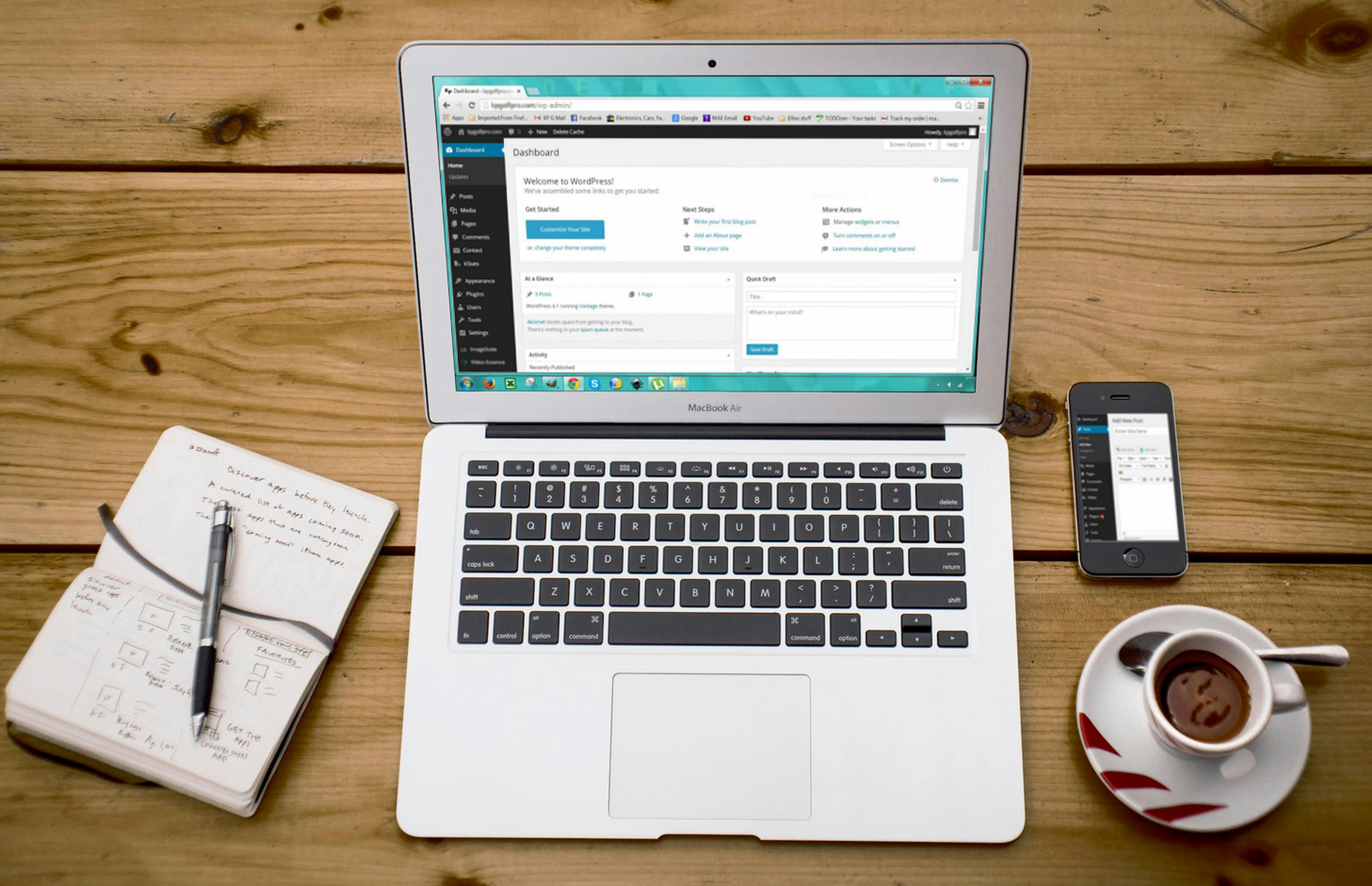What Are Psychographics in Marketing?

October 21, 2025

Psychographics, as the name suggests, are the psychological factors that define people’s thinking, feeling and doing. They are not demographic, that is, a fixed point on a scale like age or location. Psychographics are dynamic, qualitative dimensions that help understand people’s motivations, values and lifestyles.
The three pillars of psychographic analysis are known as AIO:
- Activities: What they do with their time
- Interests: What they pay attention and are curious about
- Opinions: What they believe in and value
A simple way to remember this: Demographics tell you what a customer is, but psychographics explain why they do what they do. Take two 35-year-old women for example, they may be identical on the demographic level. One of them is into sustainable and adventurous living. But the other one values convenience and luxury. So now you can’t market to these two in the same way at all.
Why Demographics Alone Fail Small Business
For as long as small businesses have been catering to their customers, they’ve based their target market around demographics—age, sex, income, geographic location and so on. It’s the data marketers know they can count on. But demographics aren’t the be-all and end-all of consumer data. On the contrary, based on a Sopro IO Small Business Marketing Trends Report, 45 percent of small and medium size businesses find lead generation challenging due to only having access to the most basic customer information. So why is this still a problem? It’s not the lack of information that’s the problem: Your demographics can tell you who your customer is, but not why they buy.
Enter psychographics: the art of determining motivations behind purchasing decisions. It’s true that two people with the exact same demographics can have entirely different purchasing habits and preferences. It’s also where most small businesses are losing money—and where your edge starts.
The Five Psychographic Variables
To create workable psychographic segments, marketers must understand and measure five core psychographic variables:
1. Personality Traits
Understanding these basic traits can help you figure out how to tailor your messaging for both segments:
- Are your customers impulse buyers or research-driven decision-makers?
- Are they trying to get the best possible deal?
- Are they in it for the overall experience?
2. Lifestyle
How people choose to spend their time and what they prioritize with their resources says a lot about their personality:
- Are they health nuts?
- Minimalists?
- Luxury-seekers?
Understanding your customers’ lifestyles will help you know what products, services, and messaging will be most relevant to them.
3. Values and Beliefs
These are often the most important levers you have as a marketer for retaining your customers:
- Are they environmentally conscious?
- Into the latest and greatest?
- Traditionalists?
4. Interests and Hobbies
You can tell a lot about where your customers are by looking at where they spend their time.
- If your target psychographic segment is all about fitness, they’ll be spending time on health and fitness social media channels and websites.
- If they’re techies, they’ll be spending their time with tech blogs and industry leaders.
- You can find out this information through customer surveys, or quick questions at checkout.
5. Social Status
This includes actual social status as well as aspirational social status, or where they want to be placed:
- Some want to be seen as status-conscious and exclusive.
- Others want to be seen as environmentally aware or community-minded.
- Social customs and perceptions play a huge part in people’s purchasing decisions.
Psychographics vs. Demographics: Why You Need Both
Here’s the critical insight: you need both psychographics and demographics, but for different reasons.
Demographics are fixed and quantitative. They don’t change much–next month that 45 year-old woman in Denver will still be a 45 year-old woman in Denver. Psychographics, however, are fluid and qualitative. They change as the social landscape shifts, as life experience is gained and circumstances change.
The key thing, though, is that one demographic group can be made up of drastically different psychographic segments. Here’s an actual small business example: Two customers at a restaurant are 35-year-old professionals who make about the same amount of money. One is looking for convenience–easy, affordable food that they can pick up on their lunch break. One is looking for specialty dining–they’ll pay high prices for artisanal, locally-sourced ingredients and unique culinary creativity. Same demographics. Totally different psychographics. Totally different marketing needed.
Combining demographics and psychographics with each other results in laser-targeted precision that can radically cut down on marketing waste. You know who to target (demographics) and how to target them (psychographics).
Building Buyer Personas with Psychographic Data
Creating detailed buyer personas is where psychographic insights come to life. You’ll want to begin with basic demographic information: age, gender, income, location, job title. This gives you a clear picture of who your customer is.
Layer In Psychographic Insights
Add the psychological dimension. Include:
- Core values and beliefs
- Lifestyle choices and priorities
- Decision-making style (impulse vs. analytical)
- Pain points and frustrations
- Primary motivations for purchase
- Preferred communication style and channels
Create Named, Detailed Personas
Instead of generic labels like “Segment B,” create personas with names like “Eco-Conscious Emily” or “Data-Driven David.” This makes them feel real and helps your marketing team connect emotionally with their audience.
A 2020 research study by Professors of Data Science show that psychographic personas improve email performance by an average of 28 percent, increase landing page conversions by 19 percent, and enhance ad targeting accuracy significantly. When your messaging speaks directly to what people value, they respond.
Collecting Psychographic Data on an SMB Budget
The biggest myth about psychographic data is that it requires costly market research firms and big budgets. It doesn’t. You have a wealth of psychographic data available to you right now and you don’t have to spend much money to get it.
Affordable Psychographic Data Collection Methods:
- Surveys and Questionnaires: Keep it short (under 5 minutes) to ensure completion. Ask questions around values, interests, lifestyle choices, and purchase motivations. Use low-cost tools like Typeform and SurveyMonkey.
- In-Person or Phone Interviews: A 15-minute chat (phone/video) with 5-10 current customers can yield gold. Ask open-ended questions about why they chose your product, what matters to them, and a picture of their lifestyle.
- Social Media Listening: Track what your social media followers like, comment on, and share. What type of content do they engage with the most? What are they talking about in your community? This will tell you their values and interests.
- Website Analytics: Adobe has an excellent beginner’s guide to psychographics which includes analyzing which content your customers spend the most time on to find their underlying psychographics. Which blog posts have the highest time-on-page? Which products are they researching? The deeper they dig, the more you learn about their psychographics.
- Light Touch Focus Groups: Gather 6-8 customers and have an informal conversation. Ask them about their lifestyle, values, and decision-making process. Record the session (with permission) for later analysis.
- Review Site Scraping: Read through customer reviews on sites like Trustpilot, Google Reviews, and industry-specific forums. Customers tend to be very honest about what they value in their reviews of your product/service.
Begin with what you already have access to. You likely have access to customer surveys, support tickets, email feedback, and social media data that you haven’t fully mined. Mining existing data is the fastest and cheapest way to get psychographic insights.
Applying Psychographics to Your Marketing Channels
Psychographic insights should inform your approach across every marketing channel. Here’s how:
Email Marketing
Move beyond segmenting by “active/inactive.” Segment by values, lifestyle, and decision-making style instead. An innovation-driven segment might respond best to emails highlighting cutting-edge features and technological advancements. A values-driven segment might respond better to emails emphasizing sustainability and social responsibility. According to Optin Monster, over 50 percent of consumers say marketing emails impact their purchasing decisions when the content is personally relevant.
Social Media Advertising
Different psychographic segments respond to different creative approaches and messaging. Your eco-conscious segment might respond best to visuals featuring nature and sustainability. Your luxury-seeking segment might respond better to premium imagery and exclusive offers. Test different creative variations for different segments and measure performance.
Content Marketing
Use psychographic insights to guide your content strategy. What blog topics address the interests and concerns of each segment beyond just product features? Create content around lifestyle topics, values-driven discussions, and solutions to their specific pain points.
Website Copy
Emphasize different value propositions for different psychographic segments. For sustainability-focused customers, highlight environmental responsibility. For efficiency-focused customers, emphasize speed and productivity. For community-focused customers, highlight connection and belonging.
Common Mistakes to Avoid
Segmentation is an art form. There are numerous errors that can weaken your psychographic segment effectiveness. The three most common include:
Too Many Segments
You might be tempted to create 10, 15, or 20 psychographic segments, but this becomes unwieldy and exponentially more complex to act on. Stick to 3-5 distinct segments and build differentiated marketing strategies for each. If your segments are too small or too numerous, your marketing resources are spread too thinly and campaigns cannot be as laser-focused. Ensure each segment is a large enough target to warrant dedicated marketing spend, yet small enough that its members have meaningful psychographic differences from other segments.
Viewing Psychographics as Static
Values, interests, and lifestyle priorities change based on cultural trends, life stages, and generational shifts. Refresh your psychographic segments at least annually to ensure they are still aligned with current customer motivations. Something that sparked purchase intent in 2024 may have a completely different impact in 2026. As customers’ values and priorities shift, so too must your understanding of them. Automation tools can aid in maintenance, but regular, scheduled re-evaluation by your team is critical to keeping up with the zeitgeist. Look for ways to build a refresh cadence into your marketing calendar.
Assuming Instead of Gathering Data
Don’t make assumptions about your customers’ values and motivations; gather real data from them. Run surveys, interviews, or analytics, but don’t base decisions on hunches. Marketers are especially susceptible to confirmation bias; once they think they “know their customer,” they tend to interpret data in a way that confirms what they think they already know. Relying on assumptions leaves you guessing and wastes marketing dollars. Real, research-backed data on your customers’ psychographics will uncover surprising insights that become the springboard for winning messaging and positioning that your competitors don’t even know they’re missing.
Collecting Data But Not Linking to KPIs
Collecting data and not measuring impact is one of the most dangerous and common psychographic segmentation mistakes you can make. You should always link psychographic variables directly to business key performance indicators (KPIs). For example, run A/B tests comparing responses to messages crafted for a psychographic segment to generic messaging. Track segment-level conversion rates, customer acquisition costs (CAC), and customer lifetime values (CLV). If you can’t measure, you can’t optimize. You need real-world KPI data to back up psychographic hypotheses and inform how to prioritize segments and messaging approaches in your budget. The best-in-class companies see psychographic customer models as hypotheses to be tested rather than assumed truths to be implemented, so don’t commit to a course of action until the data says it’s worth the budget allocation.
Implementation Roadmap
Want to implement psychographic segmentation? Follow this timeline based on success we’ve had with our clients.
Phase 1: Audit your current customers and look at your current customer data – your surveys, feedback, reviews, support tickets, etc.
- Are there patterns here?
- What makes your most successful customers tick?
- What do they have in common besides demographics?
Phase 2: Collect psychographic data and run surveys and/or interviews with your customers. Ask them about:
- Values, lifestyle, and interests
- How they make decisions,
- Aim to get 10-15 meaningful responses (quality over quantity!)
Phase 3: Segment your audience into groups and Analyze your data.
- Look for patterns within your info sets
- Sort your customers into 3-5 distinct psychographic segments
- Create named personas with detailed profiles for each segment.
Phase 4: Incorporate into marketing efforts & update email segmentation
- Create segment-specific ad creative
- Update website copy
- Plan out segment-specific content.
Phase 5: Run A/B tests to compare segment-specific messaging vs. generic messaging. Track your results, and the metrics that matter to your business:
- Conversion rates by segment
- Customer acquisition cost (CAC) by segment
- Customer lifetime value (CLV) by segment
- Retention rates by segment
- Email open rates and click-through rates by segment
FAQs
For most small businesses, 3-5 clearly defined segments work best. It’s very difficult to effectively manage and execute against more than 5-6 total segments.
Use them together. Demographics tell you who to target; psychographics tell you how to reach them. This combination of precision targeting is very powerful.
Buyer personas are a tool built using psychographic (and demographic) data. You use psychographic segmentation to identify groups of similar customers, and then create detailed personas for each of those segments.
Review at least once a year. More frequently if there are major shifts in social trends or customer feedback.
No. Most of the data you need already exists within your customer feedback, reviews, support tickets, and website analytics. With a modest investment in time, you can create psychographic segments in-house.
Take a look at our news on Marketing & Sales

 by Natalia Finnis-Smart
by Natalia Finnis-Smart

 by Shanel Pouatcha
by Shanel Pouatcha

 by Nick Perry
by Nick Perry

 by Shanel Pouatcha
by Shanel Pouatcha

 by Shanel Pouatcha
by Shanel Pouatcha

 by Shanel Pouatcha
by Shanel Pouatcha

 by Shanel Pouatcha
by Shanel Pouatcha

 by Shanel Pouatcha
by Shanel Pouatcha

 by Nick Perry
by Nick Perry

 by Shanel Pouatcha
by Shanel Pouatcha

 by Shanel Pouatcha
by Shanel Pouatcha

 by Natalia Finnis-Smart
by Natalia Finnis-Smart